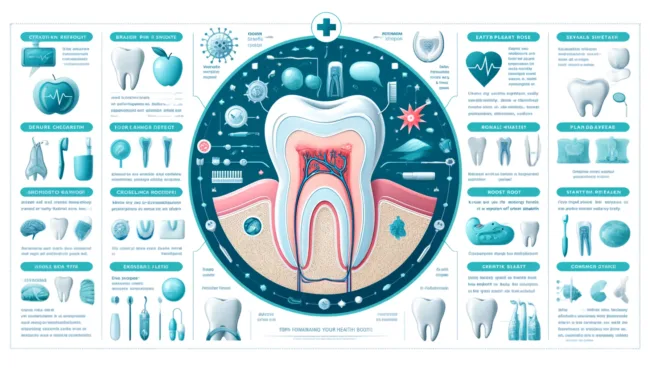Maintaining dental hygiene: Essential practices for healthy teeth and gums
Dental hygiene is fundamental to overall health because the condition of our teeth and gums impacts not only our appearance but also our ability to process food properly. Maintaining oral health is crucial as neglect can lead to infections, tooth decay, and eventually tooth loss, affecting nutrition and quality of life.
The anatomy of the tooth: A closer look
Understanding the structure of teeth is essential for effective dental care. Each tooth consists of two main parts:
– The Crown: This is the visible part of the tooth above the gum line, covered by enamel, which is the hardest substance in the human body.
– The Root: Embedded in the jawbone, the root anchors the tooth in place.
Beneath the enamel lies the dentin, a sensitive layer that protects the inner pulp of the tooth, where nerves and blood vessels are located. This arrangement not only supports the mechanical function of teeth but also their sensitivity and health.

Maintaining dental hygiene: Essential practices for healthy teeth and gums
Effective brushing techniques
Proper brushing is the cornerstone of good dental hygiene. Here are key practices for effective tooth brushing:
- Frequency: Brush at least twice a day – in the morning and before bed. Brushing after meals is ideal, though not always practical.
- Technique: Use small, circular motions at a 45-degree angle to clean all surfaces of the teeth. This technique helps remove food particles and plaque without damaging the gums.
- Tools: Choose a soft-bristled, small-headed toothbrush and fluoride-containing toothpaste. This combination provides effective cleaning while being gentle on enamel and gums.
The importance of flossing
While brushing is effective at cleaning the visible surfaces of teeth, flossing reaches where a toothbrush cannot. It removes food particles and plaque from between the teeth and below the gumline, areas often missed by brushing alone.
- Method: Use a smooth dental floss or tape, and gently insert it between the teeth, curving it into a ‘C’ shape to clean each side of the tooth.
- Frequency: Daily flossing is recommended to maintain optimal oral health.
Additional measures for maintaining oral health
Besides brushing and flossing, other practices contribute to dental health:
– Diet: Avoid sugary foods and drinks that can promote tooth decay. Include calcium-rich foods and those high in vitamin D to strengthen tooth enamel.
– Regular Dental Check-ups: Visit a dentist regularly for early detection and treatment of oral health issues.
– Lifestyle Choices: Avoid tobacco products, excessive caffeine, and foods that stain teeth, such as betel leaves and supari.
Signs to watch for
Regular self-examinations can help catch potential dental issues early. Be alert for signs such as:
– Pain or sensitivity to temperature changes
– Visible cavities or black spots on teeth
– Swollen, bleeding gums or any persistent bad taste or odor
Educating the young on oral health
Teaching children about the importance of dental hygiene from a young age sets the foundation for a lifetime of healthy habits. Encourage regular brushing, flossing, and dental visits to instill these practices.
The lifelong benefits of good dental hygiene
Maintaining good dental hygiene is more than just preserving a beautiful smile; it’s about safeguarding overall health. With the right practices, everyone can enjoy the benefits of a healthy mouth throughout their lives.
Discover more from Business-News-Today.com
Subscribe to get the latest posts sent to your email.